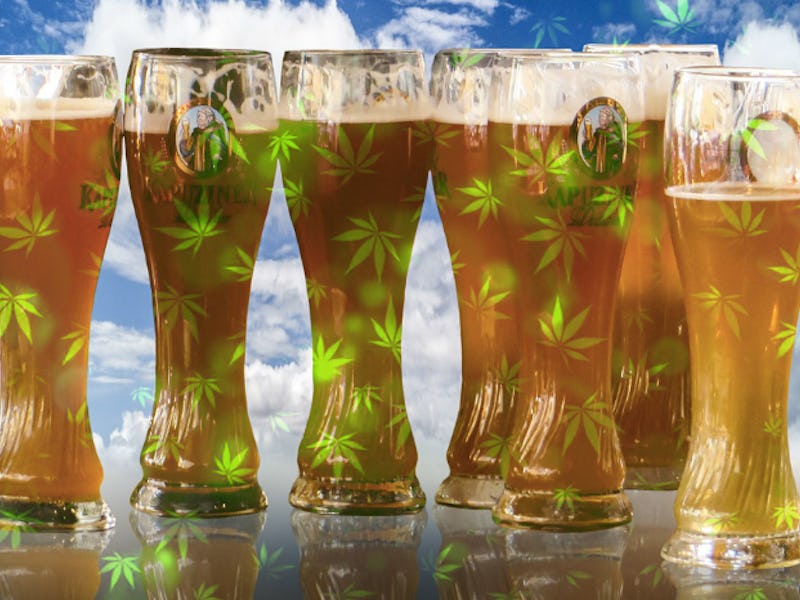Maybe it’s a hot day and you’re looking to cool off with a fresh, crisp brew. Or maybe it’s an extremely temperate day and you just want a beer — whatever, I’m not here to judge you. So, you grab a Corona, admire how its pale golden color glints through the clear glass bottle, and crack it open only to emerge puzzled and slightly disgusted. Why does this beer smell like weed?
Ever since brewers documented a dank smell rising from beer in 1875, beer aficionados and scientists have been fascinated by what turns a good beer into a smelly one. That smell is typically described as a “skunky,” a term we also use to describe the olfactory profile of particularly pungent marijuana. Brews that go skunky also are known as having a “sun taste,” “sun-struck flavor, or a “light-struck flavor.”
This off-putting scent and flavor combination, it turns out, is a result of a chemical reaction instigated by light. It’s a well-known reaction that even Corona’s producers know about: Why else do you think they encourage drinkers to add a slice of lime to their beers?
This beer probably tastes good and smells bad.
“Corona is marketed extremely cleverly,” professor of chemistry Malcolm Forbes, Ph.D., said in an interview with the University of North Carolina, explaining that hint of lime is suggested to mask the smell of skunky beer. Some have suggested that Corona continues to use clear glass bottles because it’s easier to market as a summer beer, but no one knows for sure.
In 2001, Forbes and his team became the first scientists to identify exactly what chemical mechanisms turned beer skunky. In a paper published in Chemistry: A European Journal, he and his team explained that hop-filled beer left in the sun does not a delicious beer make. That’s because flavor compounds called iso-alpha acids are released when a beer is brewed. These normally taste fine and beer-like, but when they’re struck by sunlight, they transform into free radicals, mix with protein, and form a molecule called 3-methyl-2-butene-1-thiol.
This molecule creates a smell extremely similar to that of a skunk’s spray. It is also, according to the American Chemical Society, an extremely potent smell: People can even detect it at concentrations of one part per billion — like one drop of water inside a giant swimming pool.
“Hops help flavor beer, inhibit bacterial growth, and are largely responsible for the stability of the foam in the head,” Forbes explains. “Hops, however, are light-sensitive, and the three main compounds in them identified as being light-sensitive are called isohumulones [the iso-alpha acids]. When attacked by either visible or ultraviolet light, these break down to make reactive intermediates known as free radicals that lead to the offense taste and skunky odor.”
You want beer and weed, not beer-weed.
To protect beer from the light-induced process of photodegradation, most beers are stored in brown or green bottles or aluminum cans. But even beer kept in brown glass bottles can turn smelly if it’s left out in the sun long enough.
If you want your beer to smell like, well, beer, it should be kept out of the sun — ideally, in a cooler. The actual temperature of the beer doesn’t affect its smell, but a warm beer that’s later cooled does taste more stale because the heat increases the beverage’s rate of oxidation.
Most people don’t want beer that smells like weed, but some people may want actual weed beer: Lagunitas Brewing Company makes an IPA that’s brewed with marijuana terpenes, the aromatic compounds of cannabis. This means that it doesn’t contain THC, so it can’t actually get drinkers high. As hops and cannabis are in the same taxonomic family it seems to be a natural match — but this beer actually smells like a lovely pine, rather than a blazed skunk.
If you liked this article, check out this video where a drunk scientist explains what alcohol does to your brain.
